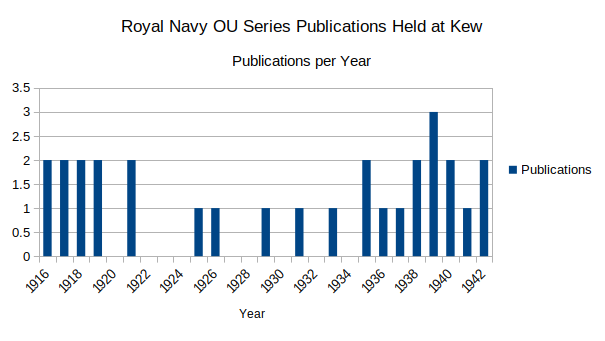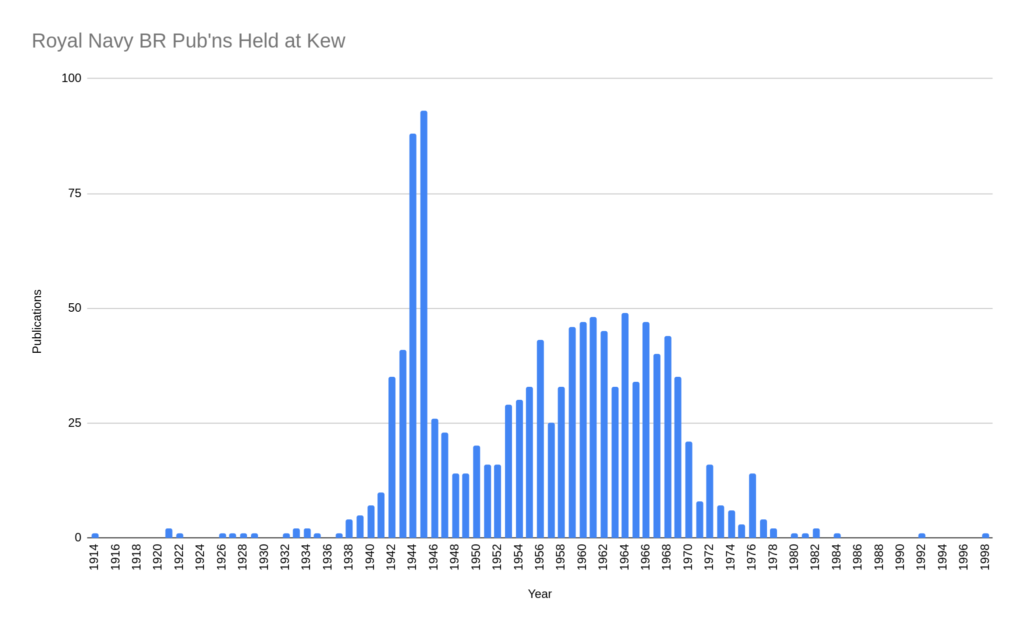So in the last post, I was extremely frustrated and started posting some questions about things I wanted to figure out. Well, after several days of work on this, it’s time for an update and let’s have a look at which questions we can answer, or not.
Before I start: I have been downloading a lot of archival search results (in the form of CSV). If you want any of these files for your own research, please let me know and I’ll make them available to you.
So: The List of the Questions
- Is ‘Document Control’ the term I’m actually supposed to be using for this concept or do I need to use some other term? What term do I need to try to search for if I can manage to find committee minutes or something to try to find the origins?
Answer: *sigh* Document Control hasn’t been replaced by another term yet in my considerations, but after talking with several people we agree that it’s not a term that’s going to be particularly helpful in trying to find documents to discuss the topic. - When did the Royal Navy implement Document Control?
Answer: It’s beginning to look like it was during the First World War.

Graph created by the author, just breaking down how many holdings were reported as being published in which years
So as I mentioned before the OU series was superseded by the BR series in 1914. In the first graph, we have a chart of the OU holdings (ADM 275) broken down by year of publication- starting in 1916. This is a good suggestion that this is about the right time. In the second graph, we see the publication dates of the holdings in ADM 234, the BR series. I very strongly think that Kew’s holdings are very incomplete- espcially for the OU series.
This isn’t very precise or hard data, but it’s a good start. There are several other series, but I’ll look more at that data in the next few posts.
- What about the RNAS/RAF?
Answer: So, it looks like it was about the same time. Turns out the AP series is something the RAF (and possibly the RNAS) produced. Not sure how it sat in the security structure worth of things- but this graph of Kew’s AIR/10 holdings suggests they started producing these essentially at the same time that the Admiralty started producing OU documents. There were other higher security levels for the RAF – CD (Confidential Documents) and SD (Secure Documents). Some of these were later downgraded to AP, apparently, and some were renumbered, some just got the new prefix
Turns out the AP series is something the RAF (and possibly the RNAS) produced. Not sure how it sat in the security structure worth of things- but this graph of Kew’s AIR/10 holdings suggests they started producing these essentially at the same time that the Admiralty started producing OU documents. There were other higher security levels for the RAF – CD (Confidential Documents) and SD (Secure Documents). Some of these were later downgraded to AP, apparently, and some were renumbered, some just got the new prefix - How about the Army?
Answer: I’ve been pointed towards some sources for Army manuals at the same point, but I’ve not done a thorough enough search. There’s certainly some evidence of *control*, but I haven’t seen any series numbers (looking at one manual from 1914 and one from 1942) So To Be Continued. - How about the British Government in general?
Answer: After speaking to several colleague, it seems that British/Imperial/Colonial Governments certainly did *some* forms of document tracking, especially around numbering, and categorizing correspondence- this was a practice well established by the early 20th century. I will be going more into depth into this in a future blog post (probably the next one). Just waiting for a little bit more data on what New Zealand’s government did as far back as 1840. - Has their been more than one scheme?Answer: What I think I meant by this was has the Royal Navy/Admiralty ever complete set aside their scheme and started another, and I don’t think so. OU was replaced was BR, which I believe is now replaced by BRd (as shown by the King’s (Queen’s) regulations. In short, I have no proof yet but I don’t see evidence of it because I think if there was, there’d be more discussion about the subject.
- When did the OU series start? Answer: Evidence from the National Archive’s holdings suggests 1915 but what about before then? My 1908 Manual of Seamanship Vol I doesn’t have an OU number attached to it. What about early versions of the Manual of Navigation or other documents?Answer: This is another thing I need to dig into- again the OU data suggests 1915/1916 but that’s very incomplete. I have more examples of early manuals I want to look at. I’m also hoping that my request to the Naval Historical Branch for a complete list of OU and BR documents comes through so I can provide some hard data and answers- but in the meantime, let’s put a peg into 1915. Early version of Manual of Seamanship suggest as late as 1930s, not OU (or BR). I have to investigate with Volume II, which I hope I can find either in person or online from that edition.
- Are there any complete lists of the series or documents? I’m less interested in say, the staff appreciations of various battles than I am in detailed maneuvering information about WW1 destroyers, but that’s just me. (but I’m very interested in the turning information of WW1 destroyers).Answer: How have the Giant-Ass Nerds (of which I am one) not done this yet? The Short and Medium Answer seems to be No: there no complete lists of OU/BR documents yet. There seems to be extensive lists of Army documents at other places.
- How does the Royal Navy’s document control look at books for sale to the public vs books just for internal use? Answer: Yeah, we’re not even close to answering this yet. The very most I can say is that it seems to shift, with less being included at the beginning, and more being included at the end but I’ll need to have a look at a lot more things (especially if I can compare original print runs and later prints).
- At what level was the decision to publish and sell documents made? Answer: TBD.
- At what level was the decision to practice document control made? Answer: TBD.
- How many documents did the RNAS/RAF/Army publish say 1900-1970ish?Answer: Well, according to what’s in AIR/10 there’s over 8300 AP documents. Army, is still to be determined, I’ve not seen a series at Kew yet but I’m trying to find that in the next few days. (I very much love how you can save your search results to CSV).
- How did document control related to the creation of the Public Record Office/archives?Answer: A very good question.
Next steps: The next steps are going to be broken down into a few different things
- Nailing Down some more original sources- from archives.org, from the Naval Marine Archive in Picton, maybe Christmas presents of OU/BR books from Ebay- but I need to get as much details as I can on Manuals of Seamanship and Manuals of Navigation for the editions from 1906ish to the 1950s- since I have the 1960s ones (at least for Seamanship). Especially want to see if I can view both first printings and later reprintings of the 1930s editions of both manuals, all volumes.
- Doing some academic reading, especially on the 1838 Public Records Act and the development of Archives in the 19th Century (in the UK at least).
- I have to do some heavy reading/analysis of the CSVs I’ve downloaded- maybe do some more searches. See how many unique holdings Kew has, what is missing. If I can get the complete publication lists analyzing those will take the place of this.
THANKS TO: Thanasis Kinias, Aimée Fox, Jane Wickenden, Richard Goette, Dave Blagden, Roger Knight, Simon Moody, Peter Elliott, Stefanie Lash, André Brett and Hanna Clutterbuck-Cook for their discussions, suggestions, ideas, and listening to my rambling so far. You are all wonderful and generous and lovely and talented.







